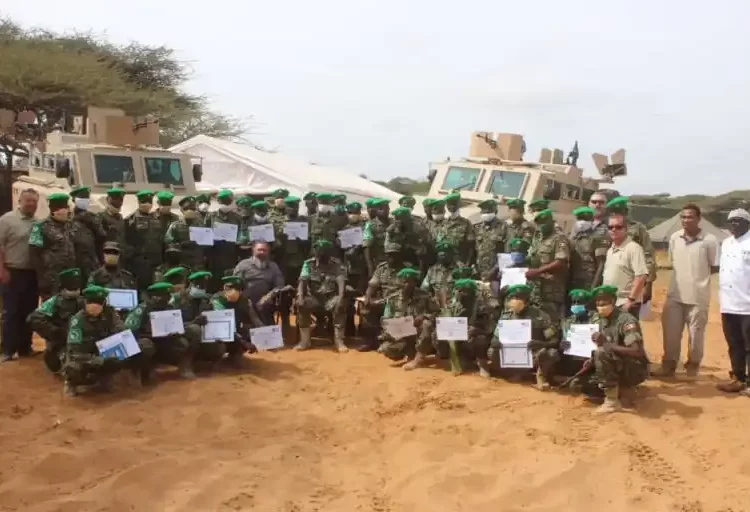The African Union Mission in Somalia (AMISOM) have completed a four-day training to counter the evolving threat posed by Improvised Explosive Devices (IEDs), which have become a weapon of choice for terrorists.
The training, which kicked off on Tuesday and ended on Friday in Mogadishu, was also attended by 20 military engineers from various AMISOM outposts and some staff officers with roles pertaining to countering the threat posed by IEDs.
“It is only by increasing our awareness, participation in and understanding of the IED threat that we will be able to mitigate the enemy’s tactics, techniques and procedures in order to better protect our soldiers and ultimately defeat the enemy,” said AMISOM Chief Force Engineer, Colonel Saheed Sadiq.
Engineer Sadiq said the evolving nature of the enemy’s tactics call for constant re-evaluation of personnel skills in countering IEDs and updating them on new trends in the network so that they are able to operate efficiently and deliver on the mission mandate.
IEDs are the preferred weapon of choice for the Al-Shabaab, who often plant them on MSRs, targeting AMISOM and government troops, but civilians often get hit.
IEDs constitute one of the most significant threats to AU peacekeepers, making the training extremely important, especially in efforts to defeat the IEDs.
Organised by the AMISOM Training Cell and the United Kingdom Mission Support Team (UKMST), the training focused on building participants’ capacity to identify and dispose of already emplaced IEDs, and mitigate the threat in time.
The Commanding Officer of the UKMST, Lieutenant Colonel Torcail Stroud-Caules, stressed the importance of participants’ understanding of the entire IED cycle, as it would enable them to identify ways to counter the threat at whatever level.
“The tactics, techniques and procedures of the people making the IEDs will adapt to the area in which they live and work, your job is to counter that. It’s important that you understand how IEDs work, how they are built, the sources that constitute the ingredients for an IED, and how to deal with that. You will also have to understand how to deal with it on the ground. Your task is to make it safe for the people going out on the ground to understand what they are dealing with, how to mitigate such threats, and ensure that they are not,” said Lt. Col. Stroud-Caules.
Lieutenant Colonel Stroud-Caules called on participants to consistently ensure that every member on the counter-IED network while out in the field is aware of their specific role to minimize casualties due to IED attacks.
The officers said the training was revealing and pledged to share with their colleagues.
“We learnt about the tactics that terrorists can use against our troops on the ground. We are going to use this information to protect lives and properties in our areas of operations,” said Lieutenant Arafat Omar Ahmed, a military engineer under Djiboutian forces serving in AMISOM.
“Most of the casualties we have suffered are due to the emplacement of IEDs, so the training was helpful. ,” said Captain Patrick Kinyua, an infantry officer under Kenyan forces in AMISOM.


